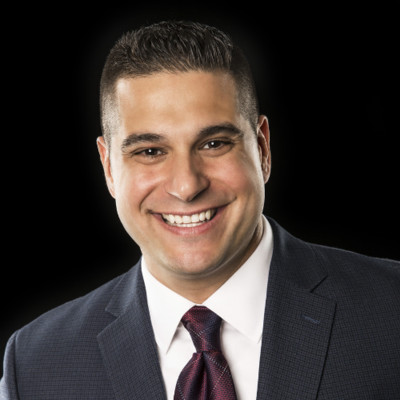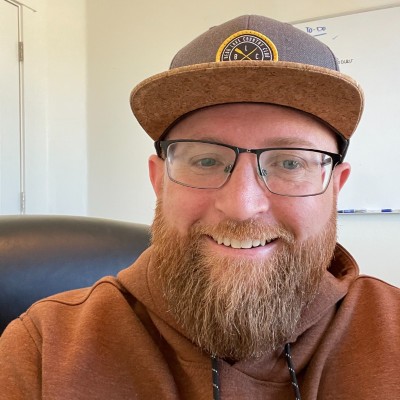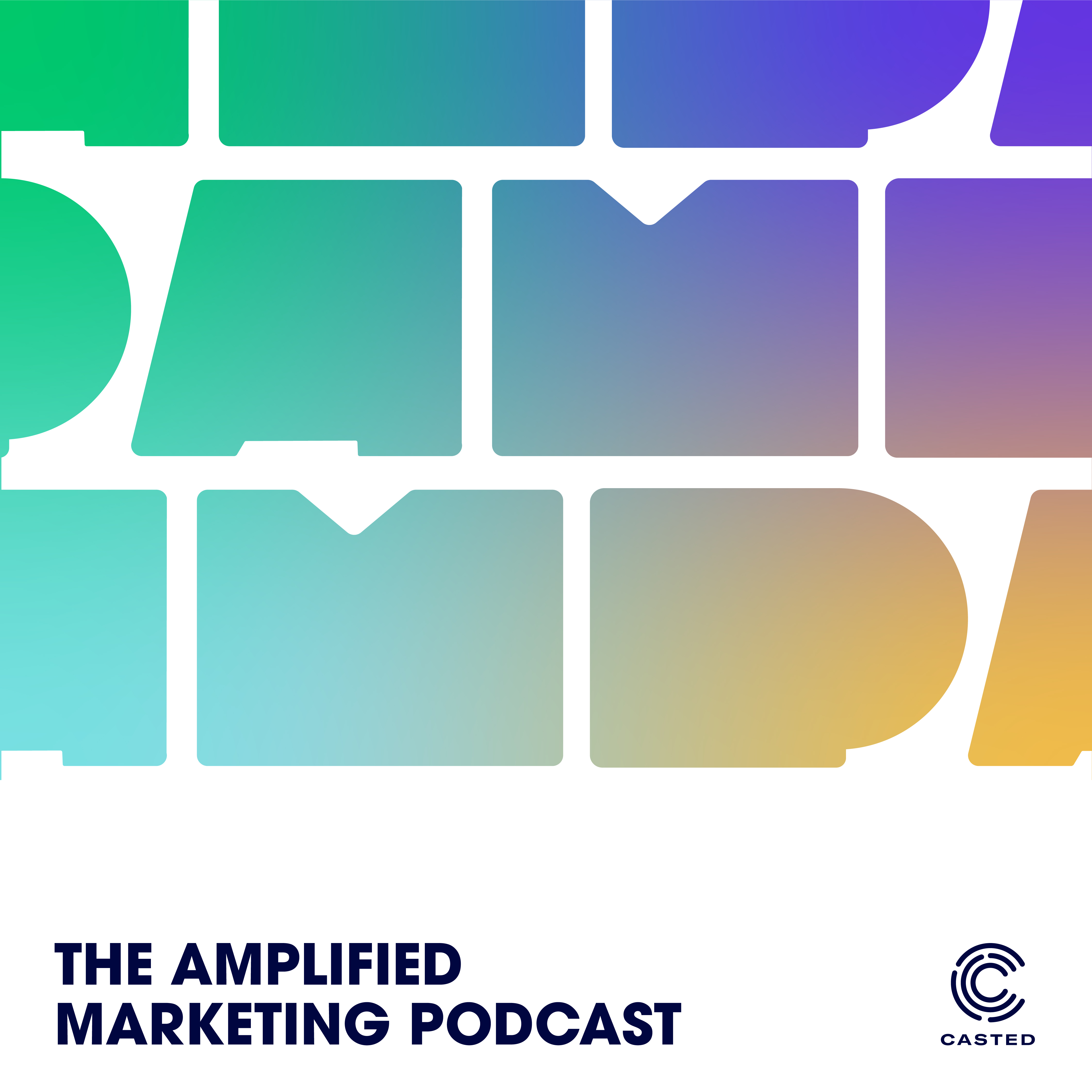How B2B Podcasts Grow Up: The 3 Keys to Audience Growth
- 0.5
- 1
- 1.25
- 1.5
- 1.75
- 2
Lindsay Tjepkema: I always laugh a little when I think about the fact that we at Casted chose a cat as our mascot. You know that famous saying, curiosity killed the cat? Well, not our podcat. Curiosity is actually the fuel for moving through this B2B podcast maturity curve. It's actually one of our values here at Casted. And stage three is where curiosity really becomes the biggest superpower that you possess. Why? Well, because curious marketers aren't satisfied with a set it and forget it show. Curious Marketers notice trends. They lean into data, they strive for growth, and it's never just a podcast. It's never really about the podcast because you see, for these curious marketers, we welcome you and your show to stage three where it's all about audience growth and understanding who they are. I'm Lindsay Tjepkema, a lifelong marketer and proud CEO and co- founder of Casted, the B2B marketing platform for brand podcasters. And I've teamed up with experts across the top sales and marketing teams in the world to detail each of the five stages of this maturity curve and what you can do to launch and grow a show with confidence. This is how B2B podcasts grow up, an original series from Casted. So your show has been on the air for a while now. Congratulations. It's a big deal. You've got a season or two or maybe more under your belt. And your processes, they're starting to really come together and they're all feeling much smoother than they were a few months ago or at the beginning of this whole thing. This podcast machine is becoming well oiled and you're seeing the benefits. You're really starting to get somewhere. In the podcasting industry, the longer your show is on the air, the better your chances are for growth. Take James Gilbert, for example. James is the CMO at Flip and the host of their podcast Spamming Zero. But James is no stranger at all to a branded podcast. He started multiple shows at multiple companies across the course of his entire career, and his number one piece of advice is to keep the show going.
James Gilbert: I think there's also some key things that people forget to do. Don't give up on your podcast. It takes time. And what I mean by time is it's not just the recording and the producing and all that takes time. Sure, that takes time, but it takes time in order for you to see some of these results.
Lindsay Tjepkema: It is a marathon for sure. Not a sprint.
James Gilbert: Exactly. So you can't hire a research company to go out and do a single survey and then you call that good. And even a single survey that a research company would do would take several weeks if not months. So you have to think of it like that. Your podcast is an avenue for you to get these insights. So I think that's a big mistake.
Lindsay Tjepkema: James is right, and pod fade is real, but why does it happen? Well, one of the biggest reasons is mismanaged expectations around audience growth. According to some stats from Buzzsprout, the average episode downloads in the first seven days from a podcast with immediate audience size, guess what it is, 29 downloads. As a CEO and as a former marketing leader, I can tell you that that's not a number that would make me very excited, and it's certainly not one that would impress anyone in the boardroom, but as I get into the top 10% of podcasts, as you look at those numbers, they see an average of 333 downloads in the first seven days of every episode release. So if we're looking at four episodes a month and compounding listenerships with each week, okay, get out your pencils, start writing on the whiteboard. Now we're talking numbers that would make ears perk up and eyebrows raise. So what does it take to grow that audience in a realistic and sustained way? A lot of it has to do with time and repetition, which is nothing that you can rush. But the good news is that with that time and with those reps, you're building a back catalog of content that is still working hard for you every single day. Here's what we mean. Stephanie Cox, CEO of Lumavate and host of Real Marketers podcast explains.
Stephanie Cox: If I look at our analytics right now for the last seven days, and I look at our top five episodes, obviously four of which are the foremost recent, the fifth episode is one from January of 2019, that content is still relevant. It's not news related. Nothing on my show is really tied to the news. So all the content's helpful really at any time. And I think what Michelle's done a really great job about is not just promoting stuff the first week or two, it's out, but also coming back to it and thinking about how we can continue to post a thought or an insight on social and link to that episode that might be from a year ago. And I think that's one of the things that I wish more people would do because it does create this excitement and it also gives you an opportunity when you talk about the impact it has. So if we promote an episode from a year ago with a previous guest, we can tag them again on social, and what's probably going to happen is they're probably going to like it or comment on it or share it again. So now I've just gotten another opportunity to engage with them in their network and get even more value out of it.
Lindsay Tjepkema: Marketers geek out with me for a minute please. Think about the last time that your team created a white paper that was still getting substantial views six months later. Heck, how about three months later? It doesn't happen with traditional long form written content, really it doesn't, not unless you start to repromote it all over again. It's a shame because I know, I believe me, I have been there. I know how much time it takes, how much hard work and resources are all put into those pieces of long form content. But this is where the magic of podcasting as a channel comes in and is so beautiful. Like Stephanie says, your old episodes continue to work for you long after you originally launched them. It's because they're discoverable on so many feeds in so many different channels, so many different players and platforms. And odds are when someone discovers your show, they'll actually go back and listen to other episodes if they liked that first one enough. It happens all the time. That's hours spent with your brand hours, many, many weeks or months or even years after they were originally created. So talk about working smarter and not Harder, podcast or where it's at. So if you're here with us in stage three of the maturity curve, that means that you've avoided the dreaded pod fade, or at least you've come back from it if you experienced it. So you've probably set realistic expectations with your leaders and team around metrics of success. Thanks to our last set of episodes in this series. If you haven't gone back and listened to those, they might be worth it. And your show is probably building a very valuable back catalog. Amazing, amazing work. Now let's get into some of the other levers that you can pull in order to ensure your show keeps going and growing. Let's start with your team. One huge shift when your show enters into stage three is the team surrounding it and supporting it. Think back to our stage one and stage two examples. We're usually looking there at a couple of people that are rallying together to get the show to simply up and off the ground and getting further buy- in from the team. It's a scrappy endeavor, but stage three is definitely a shift happening. I remember asking Vern Tremble from Wunderkind to share with me who was involved in his show, Individuality Unleashed. And at stage three, the difference between the scrappy beginnings in stage one to stage two, this team is pretty staggering. Just take a listen
Vern Tremble: When it comes to the creation of the show and bringing the show to life, it is truly a team effort. In order for us to do what we're doing, the way that we're doing it requires, one, someone with a strong understanding of video production and high quality video and editing and sound and graphic design to make something that seems so novel, appear seamless and simple to do. Creating something that looks simple is oftentimes the hardest thing to do. So having someone that knows how to do that is just extremely important. Again, shout out to Jay Sheetz and Quentin Harris on my team. And then another element of that, especially from the B2B market tech space, is client advocacy. So shout out to Jules and Haythem. They are responsible for orchestrating and identifying our clients and identifying industry insiders and internal thought leaders that they feel would be perfect for the show. And then on top of that, we have our PR agency, KCSA. Hey, hey, what's up guys? Shout out. Along with, again, more of our internal analysts that helped to identify those macro trends that are happening out in the market. And additionally, our writers, again, shout out to... I got to shout out my team. Like, Hey-
Lindsay Tjepkema: Yeah, I love it
Vern Tremble: Alana and Emily, I hope I'm not forgetting anybody. I think that's everybody. Brittany. It's really all of us working together to really understand this is the content that we're creating and then connecting the dots.
Lindsay Tjepkema: I had to keep all the shout- outs in there because Vern is right, it truly takes a village. If you're going to start growing your show. It takes some work, it takes a team. And like he mentioned, there are tons of factors to consider when deciding who to involve in your show. What are your show goals? Think about where is your audience? How do you want to reach them? Do you want to tie this into any of your existing campaigns? How are you ready to level up your podcast video strategy? The answers to all of these questions should eventually be a resounding yes, but don't get overwhelmed. It can be easy to get overwhelmed, but your team may not be as big as Vern's. And listen, you can still create some smart partnerships internally to reach your growth goals. For example, Vincent Pietrafesa is the co- host of Strista's podcast, The Marketing Stir, and he shares an example of how he's leveraging not only his team, but his product to grow the show.
Vincent Pietrafesa: For us. We have two producers. We have someone who does social media, but we have our full marketing department behind it. At Strista we own our own demand side platform, our own DSP platform to help push out media. So we drink our own champagne, and so we utilize that, Lindsay. We do connected TV ads, we do display campaigns. We market to people in the marketing industry who would be great listeners for this podcast. So it's a well- oiled machine now. We do a 30 minute preliminary interview with each guest just to see if we're going to cover the topics. We get reached out by PR agencies all the time to get some of their guests on. We actually really don't take too many of them. We just go after our own guests and we have a team that does that.
Lindsay Tjepkema: The way Vincent is utilizing their product to create campaigns around their podcast is beyond brilliant. Am I right? I mean, we definitely drink our own Kool- Aid here at Casted by using our technology to amplify our show. And Vincent's anecdote is the perfect example of how stage three podcast teams are leaning into new resources and avenues in order to achieve that show growth. So now you're getting all the players in place and thinking even smarter about how you can leverage the resources you already have for the betterment of your show and the growth of your audience. Your curiosity is showing and that's a great, great thing. So next up we're going to use that creativity and curiosity for the greater good. We're going to dive into some tactical examples of how podcasters in stage three are leveling up their shows and growing their audiences to ultimately grow their brands. So thanks so much to James Gilbert and Stephanie Cox and Vern Tremble, and Vincent Pietrafesa and their stellar insights. Go ahead and press play on that next episode. We'll be there waiting.
DESCRIPTION
So, what’s the fuel for sustainable and lasting podcast growth? The answer is simple but often overlooked.
In the first episode of Stage 3 of the How B2B Podcasts Grow Up Series, host Lindsay Tjepkema interviews podcast experts on the three most important keys to podcast growth. They dive into the nitty gritty of how to maximize your audience growth.
They also share important insights from their years of successfully branded podcasting, such as why you shouldn’t get easily discouraged about downloads, how old episodes can still be relevant and help you in the growth process, and many more valuable pieces of advice.
Today's Guests

Stephanie Cox

Vincent Pietrafesa

James Gilbert


